Our Services

Preventative Dentistry
This procedure is performed by a dental hygienist or by a dentist. It is likely the most valuable visit you will make, for its main function is prevention of dental disease as well as patient education. It will include:
- Removal of plaque, which causes tooth decay and gum disease
- Removal of tartar above and below the gum line
- Polishing the teeth
- Instruction in proper techniques of brushing and flossing
- Evaluation of personal oral hygiene
- Review of home dental care
Dental examinations evaluate the health of your mouth. Your dentist is trained to evaluate the tissues of your mouth, tongue, and neck to detect cancer in its earliest stages. Your dentist will also examine your teeth and gum tissue for signs of decay and periodontal disease.
We treat patients of all ages and provide comprehensive care for your dental health needs. A regularly scheduled oral exam is important to your overall dental health. It will include the following:
- Review of health history
- Oral cancer screening
- Evaluation of periodontal health
- Examination of teeth and existing restorations for tooth decay
- Trans-illumination of teeth to detect cracks or fractures
- Diagnostic digital x-rays
- Diagnostic models
- Treatment plan reviewed
Years ago, a tooth with a diseased or injured nerve and blood supply (known as “pulp”) was removed. Today dentists can save your tooth with a procedure called Root Canal Therapy.
Treatment often involves one or more visits. The diseased pulp is removed, the pulp chamber and root system are cleaned and then filled, sealing the end of the root. The final step involves placing a crown or filling on the tooth to strengthen and protect the tooth structure and seal the root canal systems from the top of the tooth.

Cosmetic Dentistry
Teeth whitening is a cosmetic treatment done to improve the appearance of teeth. Teeth are whitened to remove the effects of coffee, cigarettes, and other substances that permanently stain or discolor teeth. Medications such as antibiotics like tetracycline may discolor teeth. Fluorosis, a condition caused by absorbing too much fluoride, could affect tooth color. Furthermore, aging also causes teeth to lose their bright color.
Dental work that improves the appearance of teeth, gums and/or bite. It primarily focuses on improvement in dental aesthetics in color, position, shape, size, alignment and overall smile appearance.
Fillings
Tooth decay is caused by the buildup of bacteria in the mouth, which creates acid that destroys tooth enamel. A filling is a dental restoration performed by a dentist after decay has been identified and removed from a tooth. After the tooth has been prepared, a material is placed in the tooth, then adjusted and contoured to resemble the anatomy of the original tooth. The materials used are amalgam, glass ionomer, resin ionomer or composite resin.
Crowns
A crown can make a tooth structure stronger and improve its appearance. It is usually recommended to cover and support a tooth with a large filling or a cracked tooth. It can also be used as a way to cover discolored or misshapen teeth.
Bridges
A bridge replaces one or more missing teeth. The benefits can improve your appearance, maintain the natural shape of your face and improve your dental health. They are made from gold, gold alloys, porcelain or a combination of materials. A bridge is cemented in place and is “fixed”, which means that it is not removable by the patient.

Restorative Dentistry
An implant can be used to replace a tooth. First, a metal post is implanted, or surgically placed in the bone in the place where the natural tooth had been. Then, bone grows around the post, as healing takes place. Finally, a replacement tooth or crown is attached to the metal post, resulting in a natural-looking restoration. Implants may also be used to secure bridges, removable partial dentures, and complete dentures.
Surgery of the oral cavity at this office includes biopsy of soft tissue, evaluation and repair of torn or injured tissue, extractions of erupted primary or permanent teeth and extraction site preservation.
- Biopsy of soft tissue:
- The removal and microscopic examination of a small sample of soft tissue for diagnostic purposes. Soft tissue includes the skin, fat, muscle and tendons that surround, connect or support other tissues or organs. Following the removal of the soft tissue sample, it is sent to the University of Iowa Oral Pathology Department for microscopic evaluation. Results of this evaluation will be discussed with the patient. The microscopic evaluation of the tissue sample is billed through the patients’ medical insurance by the University of Iowa.
- Evaluation and repair of torn or injured tissue:
- Placing intraoral sutures following oral trauma
- Managing pain and infections following oral trauma
- Extractions of erupted primary or permanent teeth:
- Removal of a tooth from the oral cavity for various reasons
- We attempt to extract teeth using an atraumatic technique with the goal of preserving bone around the extraction site
- Extraction site preservation:
- Bone grafting is offered at the time of extraction.
- Bone grafting may be needed if the patient is wanting an implant following the extraction.
- Bone grafting can slow the resorption of the bone following an extraction, ensuring that there is adequate bone for implant placement.
Before a surgery begins, the dentist will review your health history. It is important to tell your dentist if you have any illness and/or if you are taking any medication, prescriptions or over the counter medications.
The dentist will explain what to expect during the procedure and will review any post-operative instructions. Local anesthesia is administered and the treatment is completed. Following the procedure, prescriptions for medication will be given if necessary, to relieve local discomfort and prevent infection.
Periodontal therapy focuses on treating disease of the gum tissue and bone supporting the teeth. After a thorough examination involving a periodontal probe (an instrument used to measure the level at which the gums are attached to the teeth), and evaluation of radiographs to determine bone support for the teeth, your dentist will determine if periodontal therapy is needed and if so the proper therapy for you. Periodontal therapy includes:
- Maintenance prophylaxis
- Root planing
- Periodontal Surgery
- Localized therapeutic agents
- Systemic therapeutic agents, such as medications
In the event that there is advanced periodontal disease or the disease is unresponsive to the above therapies, a referral to a periodontal specialist may be made. If your dentist refers you to a specialist, they will work together to provide you with the best and most effective care.
A sealant is a plastic material applied to the chewing surfaces of the back teeth, where decay occurs quite frequently. It will act as a barrier to help protect the areas of the teeth that are prone to decay.
When the teeth are developing, depressions and grooves form in the chewing surfaces of the enamel. These pits and fissures make great places for plaque and bits of food to hide. Sealants decrease the risk of decay by keeping out plaque and food.

